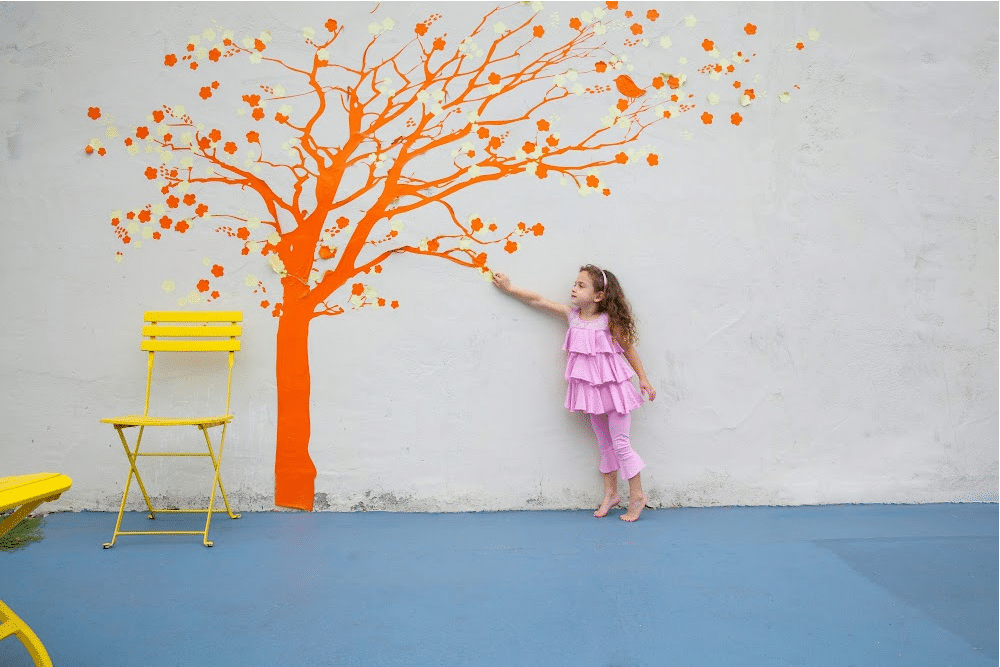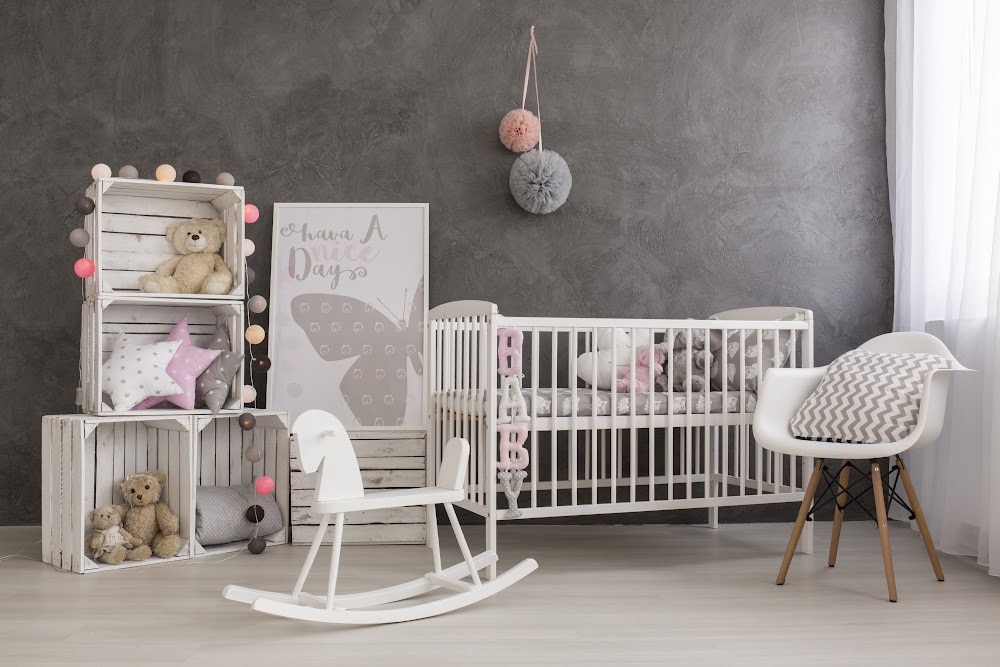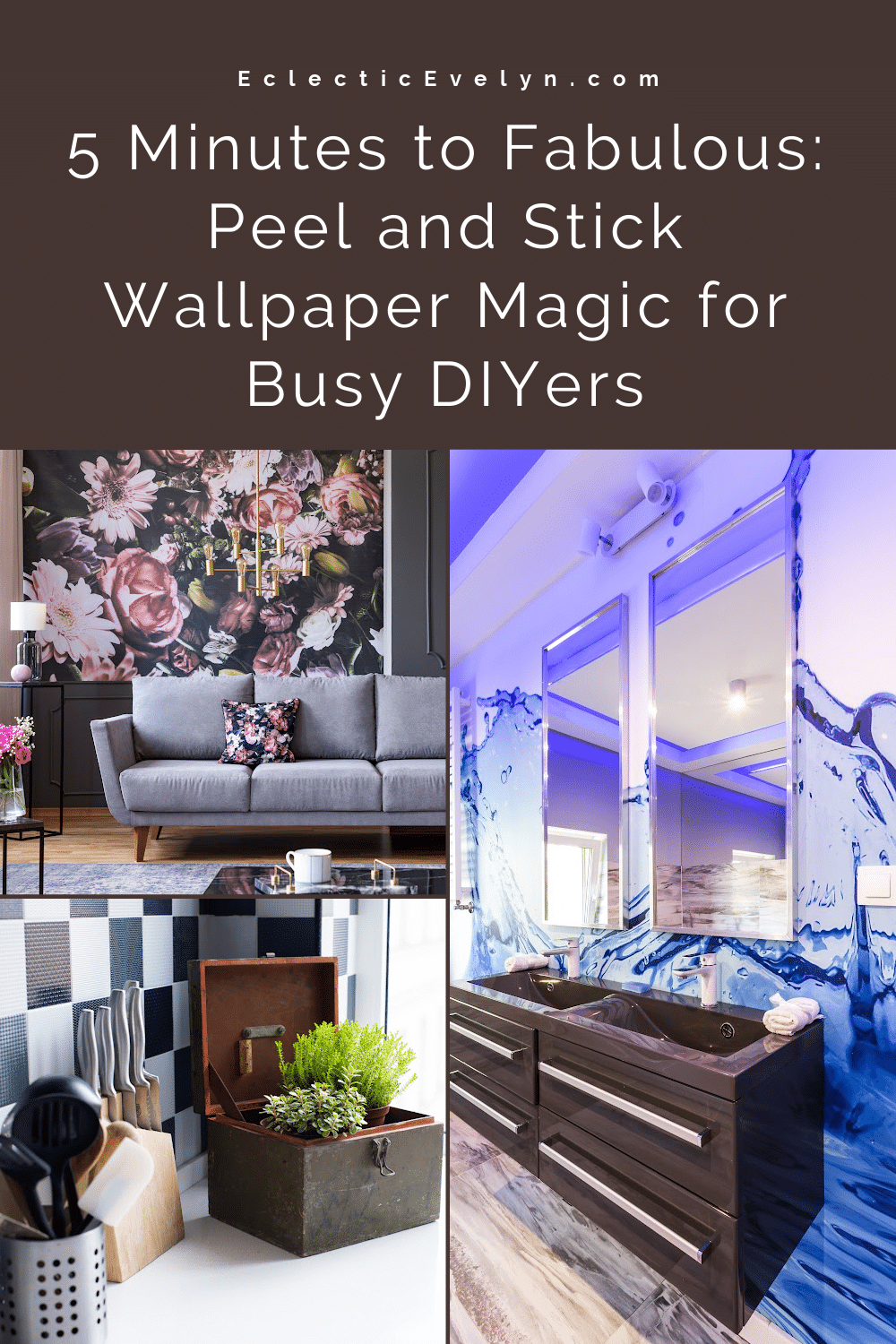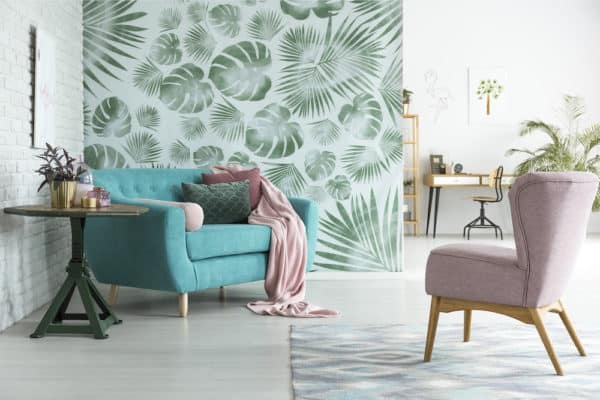Forget the days of wrestling with paste and battling stubborn seams. Peel and stick wallpaper has taken the design world by storm, offering a user-friendly, budget-conscious alternative to traditional methods. But is it all sunshine and rainbows? This comprehensive guide will peel back the layers (pun intended!), delving into the advantages, types, installation tips, and even the removal process (because let’s face it, sometimes we change our minds!). So, buckle up, design mavericks, and get ready to unlock the full potential of this game-changing decor solution.
Advantages of Peel and Stick Wallpaper
• Ease of Application
Peel and stick wallpaper is well known for its application process. Unlike wallpaper that requires paste, this type has a backing that easily sticks to smooth surfaces. This user-friendly characteristic makes it ideal for DIY enthusiasts and individuals seeking to transform their spaces without assistance.
• Wide Range of Designs
Peel and stick wallpaper offers a selection of designs, patterns, and textures. The options are practically limitless. From timeless florals and geometric shapes to abstracts and imitation textures, the options for peel-and-stick wallpaper, are infinite. Allowing each individual to find the perfect fit for their style and enhance the overall aesthetics of their homes.
• Affordable Solution
When renovating a space, costs can add up quickly. However, peel and stick wallpaper offers a budget option. Its affordability means that it is accessible to various budgets, allowing homeowners to achieve a stylish and refreshed look without breaking the bank. Making this decor option appealing to all home DIYers.
• Temporary and Ideal for Renters
One of the advantages of peel and stick wallpaper is that it offers a design solution to those plain white rental walls. The adhesive backing allows for removal without causing any damage to walls, making it an ideal choice for individuals living in rental apartments or anyone who enjoys frequent decor changes.
Types of Peel and Stick Wallpaper
• Paper Based
Paper-based peel and stick wallpaper is a widely favored option. It often features texture, providing a tactile experience and a traditional feel. While it might be more prone to damage if used in high-traffic areas or areas with moisture, it remains a choice for different design aesthetics.
• Vinyl Based
Vinyl-based varieties shine in high-traffic spaces like kitchens and bathrooms, where durability and moisture resistance are key. Think steamy showers and bubbling pots – this wallpaper can handle it all.
Kitchen Cravings:
Say goodbye to greasy walls and hello to a wipe-clean wonderland! Vinyl wallpaper lets you indulge in bold backsplashes without the commitment (or price tag) of tile. Want to swap out your floral theme for a modern geometric pattern? No problem! Peel and stick makes refreshing your kitchen décor a breeze.
Bathroom Bliss:
Tame the splash zone with a stylish and practical solution. Vinyl wallpaper’s easy-to-clean surface is perfect for battling toddler bath time battles and muddy handprints. No more scrubbing tile grout – simply wipe away the mess and keep your bathroom looking squeaky clean. Plus, with a vast array of designs and textures, you can create a spa-like oasis or a whimsical wonderland, all without damaging your walls.
Bonus Tip: Vinyl wallpaper can even be applied to shower stalls for a truly immersive experience. Just be sure to choose a product specifically designed for wet areas.
• Fabric Based
Peel and stick wallpaper made of fabric brings a touch of luxury and warmth to spaces. It often features textures like linen or canvas, providing a tactile experience. While it may be less resistant to moisture, it is an option for bedrooms, and living rooms, and is great for creating accent walls.
• Faux Wood or Tile
Imitating the appearance of wood or tile peel-and-stick wallpaper designed to resemble wood tile offers an innovative choice for those seeking a rustic or industrial aesthetic. This type adds depth and character to spaces without the expense and effort of installing wood or tile. This is also a great option for kitchen backsplashes and bathroom walls provided it is water resistant.
• Printed Mural Wallpaper
Breathe life into your walls with peel and stick wallpaper murals. Transform ordinary spaces into captivating art galleries, where sprawling landscapes, bold abstracts, or iconic cityscapes become the starring attraction. These artistic giants aren’t just décor; they’re immersive experiences, creating a spectacular scene in any room of the house. Have a wall with no windows? Create a window that looks out onto the Mediterranean Sea or a beautiful mountain vistas. And the best part? Easy application makes you the instant Van Gogh of your own home, bringing color and personality to walls without messy paint or permanent commitments.

The How to’s on Installing Peel and Stick Wallpaper
1. Prepare the Surface
Before applying peel and stick wallpaper, it is essential to ensure the surface is clean, smooth, and dry. Remove any dust, dirt, or wallpaper to create a clean surface for the adhesive to bond.
2. Precise Measurement and Cutting
Measurement of the wall’s dimensions is crucial for an installation. Measure twice, and cut once. Cut the wallpaper accordingly while leaving a few inches at the top and bottom for adjustments.
Bonus Tip: For oddly shaped corners or curves, butcher paper to the rescue! Trace the area directly onto the paper, cut it out, and use it as a template for your peel-and-stick wallpaper. No measuring, no guesswork, just perfectly cut sections for those tricky spots.
3. Maintaining Straightness with a Level
To achieve results and prevent misalignment during installation, utilize a level tool to maintain straight and level lines throughout the process.
4. Overlapping and Pattern Matching
When working with patterned peel and stick wallpaper, it’s essential to be mindful of overlapping and correctly matching patterns. Paying attention to this detail significantly enhances the appeal and design cohesion.
5. Smoothing Out Air Bubbles
As you apply the wallpaper onto your surface, employ a smoothing tool or squeegee to eliminate any air bubbles that may form along the way. Starting from the center of each section and moving toward its edges will ensure adhesion while simultaneously ensuring smoothness in appearance.
6. Trim Excess Wallpaper
To achieve a finished look, trim any additional wallpaper at the top and bottom with a utility or exacto knife after applying it.
Remember Check Twice, Peel Once: Why Test Panels Matter
Hold your decorating horses! Before unleashing a roll of peel and stick wallpaper across your entire wall, start with a test panel. This simple step saves future heartache (and potential wall damage) by checking two crucial things:
1. Surface Compatibility: Does your dream wallpaper stick like glue to your wall… or peel right off in protest? A test panel reveals any hidden surface issues like bumps, textures, or paint incompatibility that could sabotage your masterpiece.
2. Design Delight or Dud: Living with a pattern is different than admiring it in a store. A test panel lets you soak in the chosen design in your actual space, under different lighting conditions during different times of day. No buyer’s remorse here!
Remember, a little precaution goes a long way. This quick, easy step ensures your peel and stick journey starts with confidence and ends with stunning, wall-to-wall satisfaction.

Guide to Taking It All Off
1. Start at a Corner
When removing peel-and-stick wallpaper, start at one corner. Gently peel it away from the wall. The adhesive backing of the wallpaper is designed to be removable, making the removal process relatively straightforward.
2. Peel Wallpaper Slow and Steady
Take your time when peeling off the wallpaper, and proceed slowly and steadily. This will help prevent any damage to the underlying wall surface.
3. Use Heat When Necessary
If you encounter stubborn adhesive that doesn’t come off quickly, you can use heat as a solution. Applying heat from a hairdryer or heat gun can help warm up the adhesive making it easier to peel.
4. Remove Any Excess Adhesive
After removing the wallpaper, some leftover residue may remain on the wall and need cleaning up. You can use a special adhesive remover, a mixture of water and vinegar, or hand sanitizer to clean the surface effectively.
5. Repair, Refine, Renew!
Once your walls are bare, give them a final once-over. Did the peel-and-stick adventure leave any battle scars? Patch small holes or imperfections with spackle or joint compound, and smooth things out with gentle sanding. Remember, a clean slate is a happy slate! Now, thoroughly clean the surface to banish any adhesive residue – think of it as prepping your canvas for next time’s decorative masterpiece, whether it’s another peel-and-stick adventure or a fresh coat of paint. This final step ensures smooth sailing (or sticking!) for your future wall endeavors

Peel and stick wallpaper has rewritten the rules of interior design, offering a budget-friendly, DIY revolution that’s as easy as applying a sticker and as transformative as stepping into a dream. Gone are the days of messy paint splatters and soul-crushing commitment. This versatile wonder works its magic in nurseries and kitchens, bathrooms, and bedrooms, breathing life into walls with an endless spectrum of types and designs to suit every whim.
From lush landscapes to bold abstracts, you’re the artist, your home the canvas, and the possibilities are as limitless as your imagination. So grab a roll, unleash your inner DIYer, and get ready to experience the peel-and-stick bliss that’s changing the way we live. Your walls will thank you (and so will your budget!).





